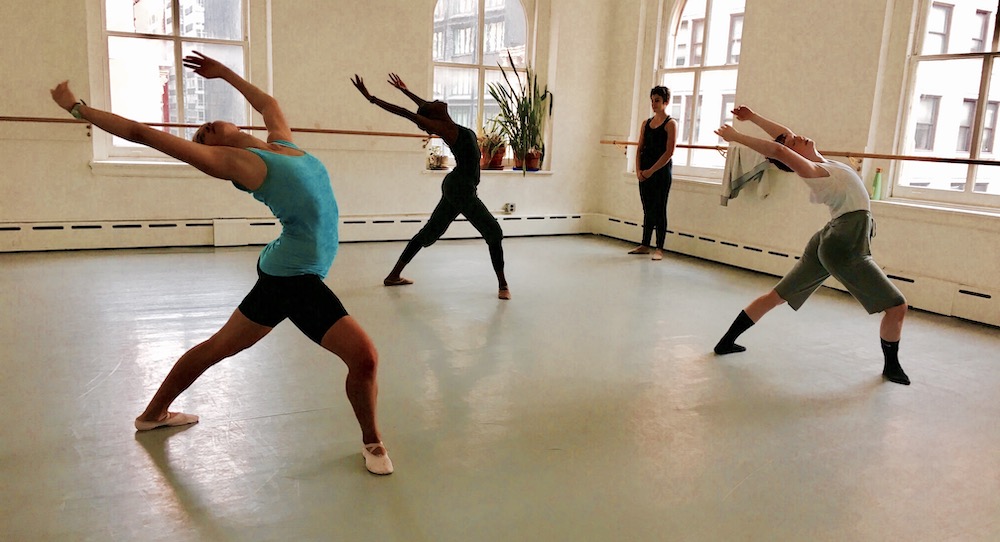In 2015, Mira Cook, like anyone facing a problem, could either live with it or take charge with a solution. Since moving to New York City in 2010, she was having trouble maintaining daily warm-up classes. She was finding classes significantly more expensive than they were in San Francisco, from where she moved. It was also time-consuming to travel to locations where many classes are held. She also realized that she wanted to be teaching more. After talking to some dance friends and colleagues and hearing that they were in the same boat, she decided to start a program wherein they’d teach one another for a $5 class charge.
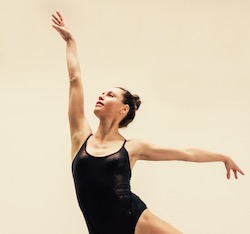
Mira Cook. Photo courtesy of Cook.
Thus, she took the latter option — to, instead of continuing to deal with the problem, take action to solve it. Cook shares that a similar program in Austin, and NYC’s The Playground (for contemporary), were inspirations for her. The original mission of the program was to “provide an affordable and convenient ballet class for professional dancers,” and that’s for the most part continued through to today, Cook says. A big part of that is having a way to warm up before rehearsals or auditions, she explains.
The community involved with these programs has steadily grown. Cook says that classes averaged four students at the beginning, and have grown to be notably larger. More teachers have also expressed interest, and she’s been able to expand the teaching roster, Cook shares. Classes began at Battery Dance (downtown Manhattan, a quick walk from the Canal Street Station), and then expanded to Brooklyn Studios for Dance (BKSD) (off the Clinton-Washington G-line stop). Cook dances for Battery Dance Company, offering her a connection to rent space there. She later got connected with Pepper Fajans at BKSD, who was immediately on board with the mission, she recounts. So classes were soon also held there. The site also has other $5 and significantly discounted classes.
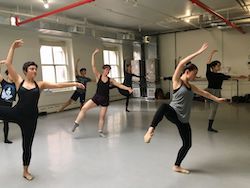
Bethany Mitchell teaching at NYC $5 Community Ballet.
NYC $5 Community Ballet has consistently held classes from its start, and will be holding two weekly classes through to the end of 2019. In order to spread the word about the program and applicable news (such as monthly class schedules and reminders), Cook started a Facebook group (NYC $5 Ballet Community) in 2017 and an Instagram account in 2018. The Facebook group has 284 members, and the Instagram account has 489 followers. An email list and word of mouth also helps keep interested people updated.
In the program, all intermediate/advanced dancers are welcome. Classes are taught by professionals currently working in the NYC dance scene as choreographers and/or performers. Cook has given a little bit of thought to offering different levels, but she also wants to have teachers — again, seasoned professionals — teach the sort of class that they’d want to take. “They’re offering their expertise, so I want them to have the option of taking class,” she explains. This idea aligns with the original mission of the program, to allow all those involved to take class conveniently, affordably and consistently.
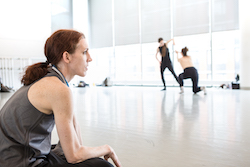
Gabrielle Lamb setting a piece on CelloPointe. Photo by Jaqlin Medlock.
Thus, teachers have the option to take class along with teaching, or to forgo their own training for the day. Gabrielle Lamb, NYC based choreographer and teacher, teaches in the program. She most often chooses to do pliés with the group and then to just teach, she shares. Bethany Mitchell, NYC-based performer/teacher and also a teacher in the series, on the other hand, most often takes full class in addition to teaching. “It’s helpful for getting warmed up for other dance things going in my day!” she says. She explains that she appreciates the opportunity to teach in the series because it’s helped her to build her experience teaching dance to adults, as she’s mostly taught youth.
Teachers also have some stylistic freedom. For example, Cook says that many teachers make “fun” playlists, with music more modern and diverse than the specialized classically-styled music often played for ballet exercises. She adds that this has even become a bit of a trademark for the program. “These fun playlists can really lighten the mood and be an icebreaker,” she says. It’s all part of another one of NYC $5 Community Ballet’s goals, to “break down the formality and rigidity of ballet to create something where everyone feels welcome,” Cook explains.
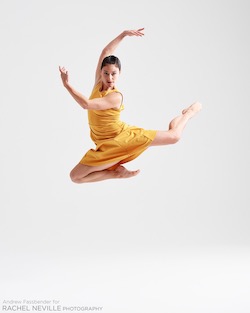
Bethany Mitchell.
Mitchell affirms that she enjoys making these playlists and using them for class. Lamb, however, most often uses traditional ballet class music. “It can be tough to find the right kind of rhythm for things like waltzes with more modern, popular music,” she says. She adds that her teaching style aligns with her classical training influences, including David Howard, the French school, and George Balanchine. Thus, teachers have a choice as to which kind of teaching approach they want to take, and what kind of class atmosphere they consequently create.
Mitchell underscores that the same kind of freedom and flexibility is there for students; she recommends students modify as needed, and sees that teaching perspective in classes she takes within the program. Cook shares that all types of adults take the classes, not only professional dancers. Late spring and summer brings many talented college-enrolled dancers into classes, she adds. Lamb says that she can tell that students come to class with different motives, some to exercise their existing technique and some to truly learn about technique and refine their own. She says that she can most often identify their objective through body language (particularly in reaction to her giving a cue or correction).
Lamb, Mitchell and Cook all see how all these students appreciate what the program offers. “I can really see how it’s a great resource,” Lamb says. She also notes how there’s a “healthy balance” of students who drop in once, regulars and those all along that spectrum. She affirms that this helps newcomers not feel like they’re coming into a tight-knit, insular group. “We’re really aiming for a community feel,” Cook asserts. Mitchell says that it’s a “low-stress environment,” allowing for more personal enjoyment and connection with others in the community.
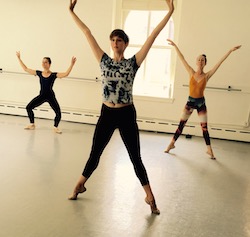
NYC $5 Community Ballet. Photo courtesy of Mira Cook.
As for where and how they might want to see the program grow, they’d also all like to see class sizes continue to expand. At the same time, Cook believes that it’s all “working at a level that’s manageable for myself and the teachers.” For related resources, Lamb suggests Dance Project of Washington Heights’s “pay-what-you-can” classes, as well the @thebrokedancer Instagram account.
She also shares a favorite memory of hers of teaching in the program. One of her classes fell on New Year’s Day 2019, and she thought no one (or very few students) would come. It ended up being a very full class. All of these dancers together, stepping into the New Year with dedication to their ballet craft, at a convenient location and price for them — that’s a special thing.
Mitchell stresses how it’s really grown to be a community. “It feels like not just coming to work on my technique or warm up for my dance day but coming to do all of that and seeing my friends, too!”
Follow NYC $5 Community Ballet on Facebook and Instagram for weekly class schedules.
By Kathryn Boland of Dance Informa.


